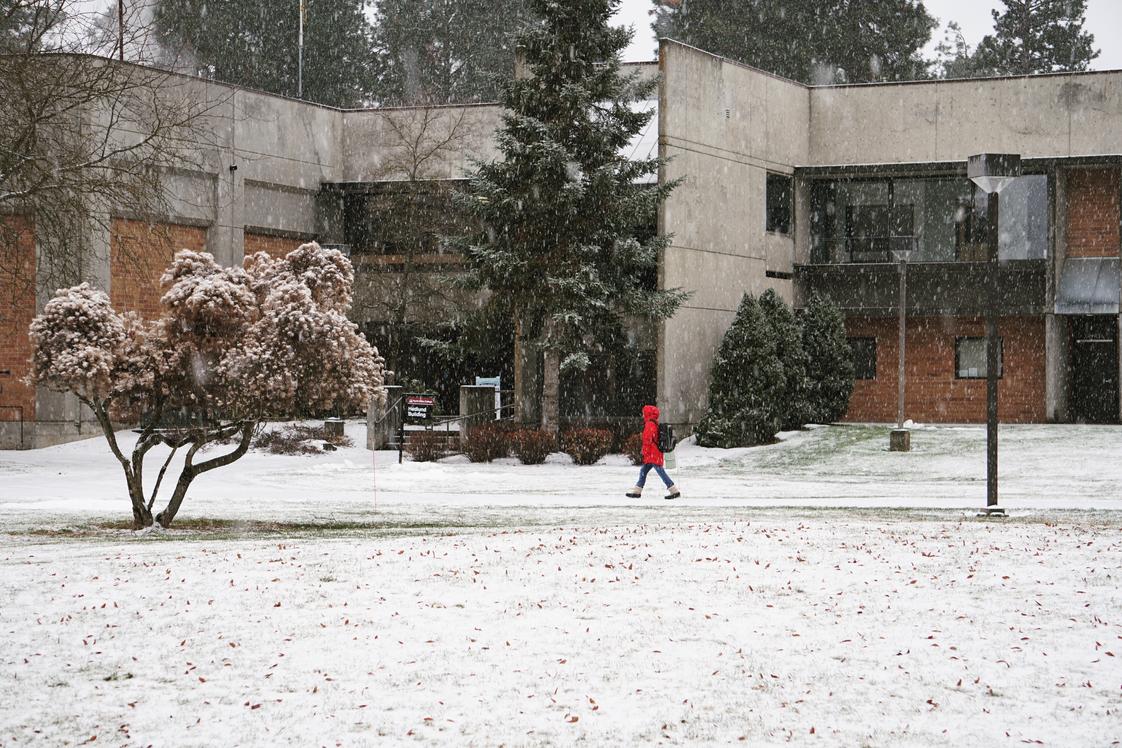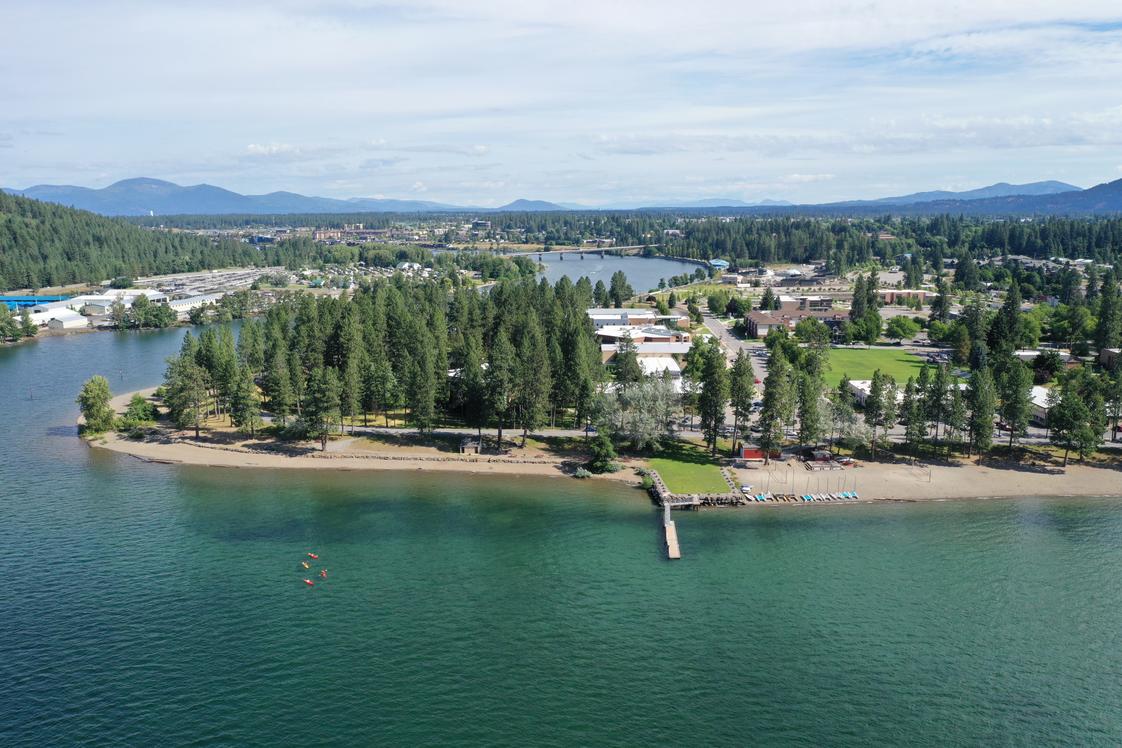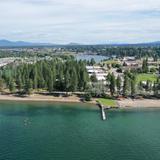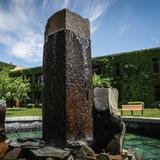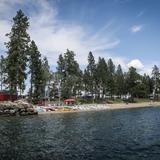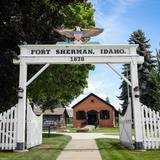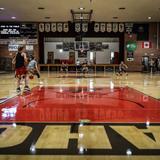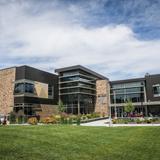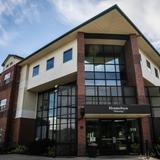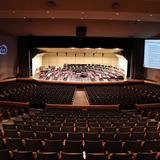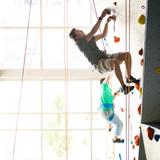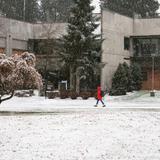- Founded in 1933, North Idaho College is a comprehensive community college located on the beautiful shores of Lake Coeur Alene. NIC offers more than 80 degrees and certificates in a wide spectrum of academic transfer, professional-technical, and general education programs to more than 4,856 credit students and 7,595 non-credit students each year.
School Highlights
North Idaho College serves 5,470 students (35% of students are full-time).
The college's student-teacher ratio of 8:1 is lower than the state community college average of 23:1.
Minority enrollment is 26% of the student body (majority Hispanic), which is less than the state average of 36%.
Quick Facts (2025-26)
- Enrollment: 5,470 students
- In-state tuition: $3,214
- Out-state tuition: $7,966
- Student-teacher ratio: 8:1
- Minority enrollment: 26%
- Source: Verified school update
School Overview
The teacher population of 691 teachers has stayed relatively flat over five years.
North Idaho College
(ID) Community College Avg.
Carnegie Classification
Associate's Colleges: High Transfer-Mixed Traditional/Nontraditional
Associate's Colleges: High Transfer-Mixed Traditional/Nontraditional
Institution Level
At least 2 but less than 4 years
At least 2 but less than 4 years
Institution Control
Public
Private not-for-profit
Colors
Maroon and gray
Total Faculty
691 staff
334 staff
School Calendar
Student Body
The student population of North Idaho College has grown by 7% over five years.
The student-teacher ratio of 8:1 has increased from 7:1 over five years.
The North Idaho College diversity score of 0.43 is less than the state average of 0.55. The school's diversity has grown by 13% over five years.
Total Enrollment
5,470 students
4,349 students
Student-Teacher Ratio
8:1
23:1
# Full-Time Students
1,888 students
767 students
# Part-Time Students
3,582 students
3,582 students
# Enrollment Undergraduate
547 students
452 students
# Full-Time Undergraduate Students
1,888 students
767 students
# Part-Time Undergraduate Students
3,582 students
3,582 students
Total Dormitory Capacity
198 students
544 students
% American Indian/Alaskan
1%
n/a
% Asian
1%
1%
% Hispanic
7%
18%
% Black
1%
2%
% White
74%
64%
% Hawaiian
n/a
1%
% Two or more races
4%
3%
% Non Resident races
n/a
2%
% Unknown races
11%
9%
Diversity Score
0.43
0.55
College Completion Rate (Students who graduate in less than 4 years)
26%
44%
College Completion Rate (Students who graduate in 4 years or more than 4 years)
n/a
1.37%
Average Graduate Earnings (10 Years)
$33,900
$30,000
Tuition and Acceptance Rate
The public in-state tuition of $3,214 is less than the state average of $3,634. The in-state tuition has declined by 35% over four years.
The public out-state tuition of $7,966 is more than the state average of $7,627. The out-state tuition has declined by 8% over four years.
In-State Tuition Fees
$3,214
$3,634
Out-State Tuition Fees
$7,966
$7,627
Tuition Notes
$141.50 per credit for Idaho residents (subject to change)
% Students Receiving Some Financial Aid
94%
94%
Median Debt for Graduates
$9,000
$11,500
Median Debt for Dropouts
$5,250
$5,250
Acceptance Rate
n/a
97%
SAT Reading
n/a
515
SAT Math
n/a
510
ACT Composite
n/a
23
ACT English
n/a
22
ACT Math
n/a
22
Sports
Total Sports Offered
7 sports
Sports
BasketballCheering
GolfSoccer
SoftballVolleyball
Wrestling
Extracurriculars
Total ExtracurricularsTotal Extra-curric.
25 extracurriculars
ExtracurricularsExtra-curric.
Club or Organization:
Arts and Music Programs:
Recreational Athletic Programs:
American Indian Student AllianceAspiring Artists Club
Business Professionals of AmericaCardinal Geology Club
Computer Science and Technology ClubLDSSA - Institute Club
NIC Student Nurses AssociationPhi Theta Kappa
Publications ClubTheater Club
TRiO ClubVeterans Club
Arts and Music Programs:
Cardinal Chamber EnsembleCardinal Choral
Cardinal Pep BandCardinal Singers
Cardinal VoicesNIC Jazz Band
Theatre program - Open CallsWind Symphony
Recreational Athletic Programs:
Climbing WallGroup Fitness Program
Outdoor PursuitsRec Sports Team Sports/Activities
Student Wellness & Recreation Center
Source: 2024 (or latest year available) Integrated Postsecondary Education Data System (IPEDS) , School Administrators
School Notes
- School Mascot: Cardinals
- Founded in 1933, North Idaho College is a comprehensive community college located on the beautiful shores of Lake Coeur d'Alene.
- NIC offers more than 80 degrees and certificates in a wide spectrum of academic transfer, professional-technical, and general education programs. Approximately 4,856 students are enrolled in credit classes and more than 7,595 participate annually in non-credit courses. NIC operates with an open-door admissions policy to meet the needs of individuals with divergent interests and abilities. NIC also plays a key role in economic development by preparing competent, trained employees for area businesses, industries, and governmental agencies.
- NIC's five-county service area spans more than 7,000 square miles. The college serves this vast region through outreach centers in Bonners Ferry, Kellogg, and Ponderay, as well as through an extensive array of Internet and interactive video conferencing courses. As one of three community colleges in the state, North Idaho College works to provide a variety of career pathways for students from fast-paced, one-credit classes to certificates and transfer degrees.
- NIC works closely with the University of Idaho, Lewis-Clark State College, Idaho State University, and Boise State University to provide transfer options for students. NIC offers a variety of student government and club opportunities for students with a wide range of interests and is known nationally for its competitive athletics programs.
- NIC is located amid the four-season beauty of North Idaho's world-famous recreation area. Outdoor activities include skiing, hiking, hunting, boating, fishing, backpacking, camping, swimming, and the ever-popular studying on the beach.
- NIC's campus lies within the city limits of Coeur d'Alene, Idaho, a lakeside city with a growing population of 38,388 residents. Metropolitan amenities are close by with Spokane, Washington, a city of 195,695, just 30 minutes away and a Spokane - Coeur d'Alene metropolitan area of more than 700,000.
Frequently Asked Questions
How much does North Idaho College cost?
North Idaho College's tuition is approximately $3,214 for In-State students and $7,966 for Out-State students.
What schools are North Idaho College often compared to?
North Idaho Collegeis often viewed alongside schools like College of Western Idaho by visitors of our site.
What sports does North Idaho College offer?
North Idaho College offers 7 interscholastic sports: Basketball, Cheering, Golf, Soccer, Softball, Volleyball and Wrestling.
Recent Articles

The Rise of Technical and Vocational Training in 2025
Explore the 2025 surge in technical and vocational training—enrollment, policy, costs, and why this path is gaining ground for students and parents.

Stackable Credentials: How Community Colleges Advance Careers
Discover how community colleges use stackable credentials to build career pathways, boost earnings, and enable lifelong learning in 2025.

High-Paying Jobs You Can Get with a Community College Degree
Discover top high-paying careers you can launch in 2025 with a community college (associate) degree and high-growth credentials in tech, healthcare and trades.

